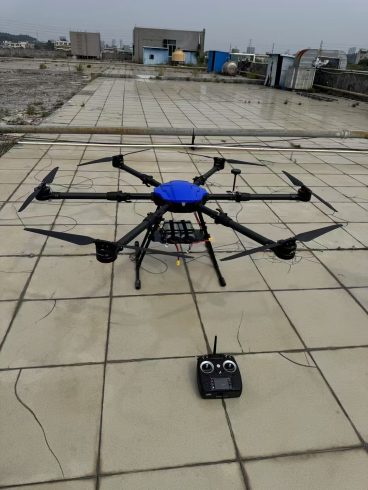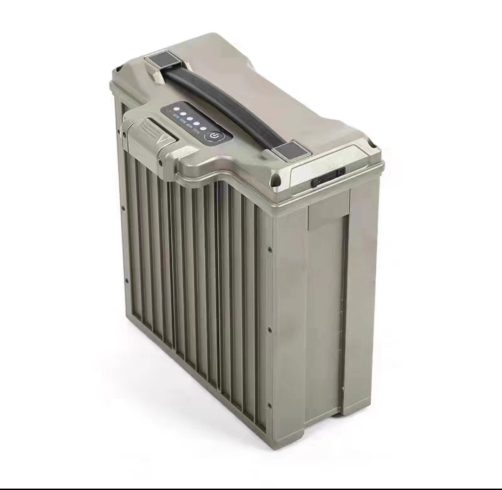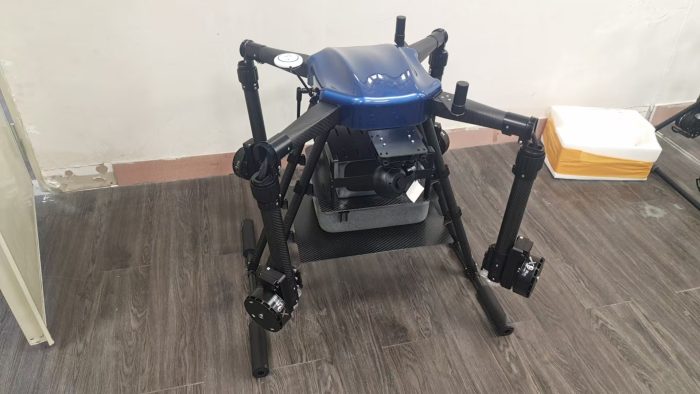![图片[1]-How to Get Certified for Drone Spraying: A Step-by-Step Guide-msoen](https://www.msoen.com/wp-content/uploads/2025/04/3ea0601715184639-1024x768.jpg)
Drone spraying is transforming agriculture, but operating spray drones commercially requires adherence to strict certification standards. Whether applying pesticides, fertilizers, or bio-stimulants, proper licensure ensures safety, regulatory compliance, and operational efficiency. This guide breaks down the certification process for drone spraying, covering training, exams, and regional requirements to help you launch a successful spraying career.
Why Certification Matters
Certification validates your expertise in:
- Safe chemical handling to protect ecosystems and human health.
- Precision spraying techniques to minimize waste and drift.
- Legal compliance with aviation and agricultural regulations.
Uncertified operators risk fines, operational shutdowns, or environmental damage.
Key Components of Drone Spraying Certification
Certification typically involves three pillars:
- Drone Pilot License: Aviation authority-mandated training for flight operations.
- Chemical Application Endorsement: Specialized training for handling and spraying agrochemicals.
- Regional Agricultural Permits: Local approvals for pesticide/herbicide use.
Step-by-Step Certification Process
- Obtain a Drone Pilot License
Most countries require a commercial drone license to operate spray drones for hire.
- United States:
- FAA Part 107 Remote Pilot Certificate:
- Pass a 60-question exam on airspace, weather, and drone regulations.
- Renew every 24 months via recurrent online testing.
- FAA Part 137 Certification (for pesticide application):
- Submit an operational plan detailing chemicals, equipment, and safety protocols.
- European Union:
- EASA A1/A3 Open Category License (for drones under 25kg):
- Complete online training and pass a theoretical exam.
- Specific Category Authorization (for spraying):
- Submit a risk assessment to the national aviation authority (e.g., UK CAA, Germany’s LBA).
- India:
- DGCA Remote Pilot License:
- Train at a DGCA-approved school and pass a written and practical exam.
- Australia:
- CASA RePL (Remote Pilot License):
- Complete a CASA-approved training course and log supervised flight hours.
Preparation Tips:
- Study free resources like the FAA’s Part 107 Study Guide or EASA’s Easy Access Rules.
- Use apps like Drone Pilot Ground School for practice exams.
- Complete Chemical Application Training
Specialized courses teach safe handling and spraying techniques for agrochemicals. Key topics include:
- Chemical Label Compliance: Understanding dosage, buffer zones, and environmental restrictions.
- Drift Mitigation: Adjusting droplet size, flight altitude, and nozzle types.
- Emergency Protocols: Managing leaks, spills, or exposure incidents.
Recommended Programs:
- National Agricultural Aviation Association (NAAA)’s Chemical Handling Course (U.S.).
- International Organization for Biological Control (IOBC) workshops (Europe).
- Apply for Agricultural Spraying Permits
Local agricultural agencies often require additional permits for pesticide/herbicide use.
- U.S. EPA Pesticide Applicator License:
- Pass a state-administered exam on integrated pest management (IPM) and environmental safety.
- EU Member States:
- Obtain a Phytosanitary Certificate for pesticide application under EC 1107/2009.
- India:
- Secure a Insecticides Act Permit from state agricultural departments.
Documentation Needed:
- Proof of drone and nozzle specifications.
- Chemical safety data sheets (SDS).
- Insurance certificates covering liability and environmental damage.
- Pass Practical Field Assessments
Some regions require hands-on evaluations to demonstrate spraying proficiency:
- Flight Maneuvers: Navigate obstacle courses while maintaining spray patterns.
- Chemical Calibration: Adjust flow rates and droplet sizes for different terrains.
- Scenario Testing: Respond to simulated emergencies (e.g., sudden wind gusts).
- Maintain Certification
Stay compliant through:
- Renewals: Complete recurrent training (e.g., FAA’s Part 107 every 24 months).
- Continuing Education: Attend workshops on new regulations or technologies (e.g., AI-assisted spraying).
- Equipment Inspections: Regularly service drones and sensors to meet aviation standards.
Case Study: From Hobbyist to Certified Spray Drone Operator
John, a U.S. soybean farmer, followed this path:
- Earned FAA Part 107 certification via an online course.
- Completed NAAA’s chemical handling training.
- Acquired an EPA pesticide license in Illinois.
- Purchased liability insurance covering $1M in drift-related claims.
Within six months, John reduced herbicide costs by 35% and expanded services to neighboring farms.
Common Certification Challenges
- High Costs: Training and permits can exceed $2,000 in some regions.
- Solution: Look for government grants (e.g., USDA’s Rural Development Program).
- Complex Regulations: Navigating overlapping aviation and agricultural rules.
- Solution: Consult local agricultural extension offices or legal advisors.
Future of Drone Spraying Certification
- Micro-Credentials: Short courses on niche topics like organic spraying or precision fertilizer application.
- Global Standardization: Bodies like ISO developing unified drone spraying guidelines.
- AI-Powered Audits: Automated systems verifying compliance via flight logs and sensor data.
Conclusion
Certification for drone spraying is a multi-step but manageable process that combines aviation expertise with agricultural knowledge. By investing in training, understanding regional laws, and staying updated on industry trends, operators can build profitable, sustainable businesses while safeguarding the environment. As demand for precision agriculture grows, certified drone sprayers will play a pivotal role in shaping the future of farming.
Keywords: how to get certified for drone spraying, drone spraying certification, agricultural drone pilot license, FAA Part 137 certification, drone chemical application training












暂无评论内容